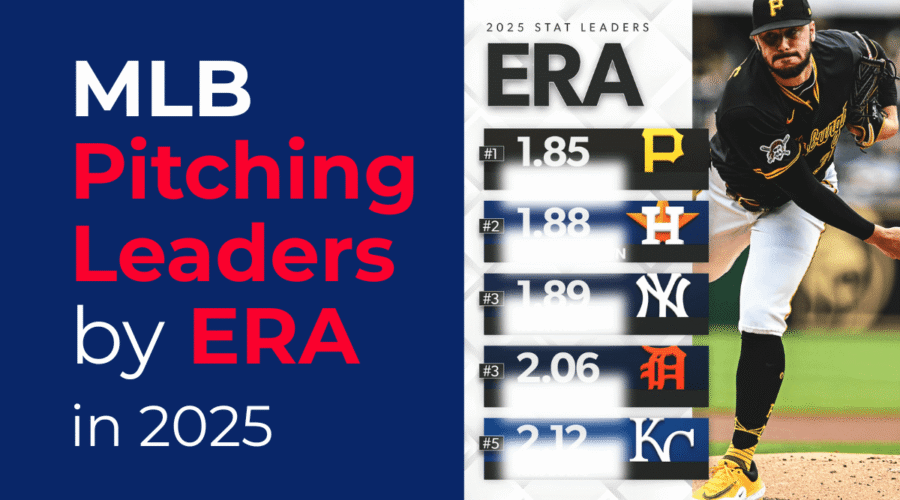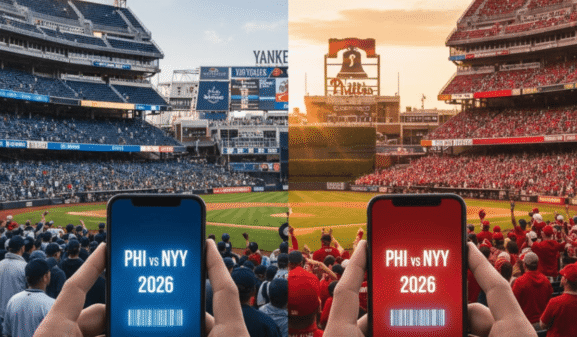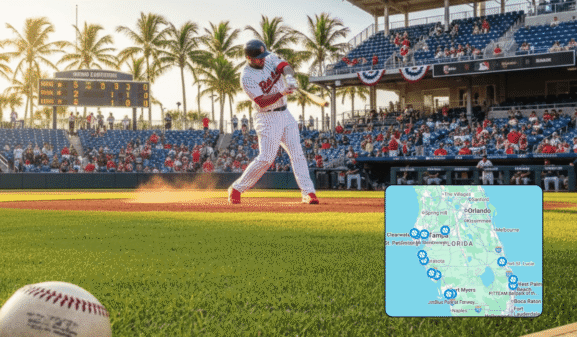MLB Pitching Leaders by ERA in 2025: A Deep Dive into the Top 10
In a season defined by power arms and pinpoint command, 2025’s ERA leaders offer a masterclass in pitching excellence. From rookie sensations to seasoned aces, these hurlers combined spin, velocity, and strategy to keep runs off the board. Below, we spotlight the Top 10 MLB ERA leaders of 2025, complete with the essential metrics—ERA, innings pitched (IP), strikeouts (SO), and WHIP—to show exactly why each pitcher earned their place on the leaderboard.
The Top 10 ERA Leaders of 2025
| Rank | Player | Team | ERA | IP | SO | WHIP |
|---|---|---|---|---|---|---|
| 1 | Paul Skenes | PIT | 2.02 | 138.0 | 154 | 0.92 |
| 2 | Tarik Skubal | DET | 2.18 | 140.2 | 181 | 0.83 |
| 3 | Garrett Crochet | BOS | 2.23 | 141.1 | 175 | 1.09 |
| 4 | Matthew Boyd | CHC | 2.34 | 130.2 | 118 | 1.03 |
| 5 | Cristopher Sánchez | PHI | 2.40 | 138.2 | 145 | 1.07 |
| 6 | Hunter Brown | HOU | 2.47 | 131.0 | 155 | 0.98 |
| 7 | Yoshinobu Yamamoto | LAD | 2.51 | 122.0 | 139 | 1.04 |
| 8 | Kris Bubic | KC | 2.55 | 116.1 | 116 | 1.18 |
| 9 | Max Fried | NYY | 2.62 | 134.0 | 125 | 1.03 |
| 10 | Zack Wheeler | PHI | 2.64 | 139.2 | 182 | 0.92 |
1. Paul Skenes (PIT) – ERA: 2.02, IP: 138.0, SO: 154, WHIP: 0.92
At just 21 years old, Pittsburgh’s Paul Skenes stunned the league with a 2.02 ERA. Combining a mid-90s fastball with a devastating curve, Skenes induced weak contact all season. His 0.92 WHIP ranks first among qualified starters, illustrating his remarkable ability to limit baserunners. In 138 innings, he struck out 154 batters—over 10 strikeouts per nine innings—cementing his status as the game’s premier young ace.
2. Tarik Skubal (DET) – ERA: 2.18, IP: 140.2, SO: 181, WHIP: 0.83
Detroit’s southpaw Tarik Skubal led all starters with an astounding 0.83 WHIP. His spin-heavy changeup baffled hitters, resulting in a sterling 2.18 ERA. Logging 140⅔ innings, Skubal fanned 181 batters (11.6 K/9), the highest strikeout rate in the top ten. His blend of swing-and-miss stuff and ground-ball efficiency made every Tigers start must-see TV.
3. Garrett Crochet (BOS) – ERA: 2.23, IP: 141.1, SO: 175, WHIP: 1.09
Boston’s Garrett Crochet continued to dominate after his breakout rookie year. His 2.23 ERA over 141⅓ frames paired with a career-high 175 strikeouts. Though his 1.09 WHIP sits higher than the top two, Crochet’s electric fastball/slider combo led to 12.7 K/9—one of the game’s most intimidating strikeout pitches.
4. Matthew Boyd (CHC) – ERA: 2.34, IP: 130.2, SO: 118, WHIP: 1.03
Chicago’s veteran lefty Matthew Boyd leaned on precise location and a deceptive changeup. In 130⅔ innings, he posted a tidy 1.03 WHIP and struck out 118 batters. His consistency anchored the Cubs’ rotation, especially in high-leverage divisional matchups.
5. Cristopher Sánchez (PHI) – ERA: 2.40, IP: 138.2, SO: 145, WHIP: 1.07
Philadelphia’s Cristopher Sánchez delivered one of the league’s most durable seasons: 138⅔ innings at a 2.40 ERA. His mid-90s fastball paired with a sharp slider produced 145 Ks, while his 1.07 WHIP reflected above-average control and contact management.
6. Hunter Brown (HOU) – ERA: 2.47, IP: 131.0, SO: 155, WHIP: 0.98
Houston’s Hunter Brown showcased his all-around talent. A 2.47 ERA came alongside a sub-1.00 WHIP—0.98 over 131 innings—and 155 strikeouts. Brown’s ability to mix three-seamers, sliders, and changeups kept even the best lineups off balance.
7. Yoshinobu Yamamoto (LAD) – ERA: 2.51, IP: 122.0, SO: 139, WHIP: 1.04
In his debut American League season, Japan’s Yoshinobu Yamamoto adapted seamlessly. Over 122 innings, he posted a 1.04 WHIP and fanned 139 hitters. His pinpoint control and textured arsenal quickly made him a Dodgers staple.
8. Kris Bubic (KC) – ERA: 2.55, IP: 116.1, SO: 116, WHIP: 1.18
Kansas City’s Kris Bubic broke out with a 2.55 ERA in 116⅓ innings. Though his 1.18 WHIP suggests room for improvement, Bubic’s ability to induce grounders kept his ERA down. His steady performance provided valuable rotation depth for the Royals.
9. Max Fried (NYY) – ERA: 2.62, IP: 134.0, SO: 125, WHIP: 1.03
Yankees ace Max Fried continued his tenure in pinstripes with a 2.62 ERA over 134 innings. A career-low 1.03 WHIP and 125 strikeouts highlighted his season. Fried’s veteran savvy and leadership were as valuable as his on-field results.
10. Zack Wheeler (PHI) – ERA: 2.64, IP: 139.2, SO: 182, WHIP: 0.92
Rounding out the top ten, Philadelphia’s Zack Wheeler led the group in strikeouts (182). His 2.64 ERA masks an elite 0.92 WHIP, matching Paul Skenes for fewest baserunners per inning. Wheeler’s durability—nearly 140 innings—and swing-and-miss arsenal made him a formidable finale to our list.
Why ERA Still Matters
Earned Run Average (ERA) remains baseball’s go-to metric for measuring how many runs a pitcher allows per nine innings. While advanced stats like FIP and SIERA isolate defense and luck, ERA still captures the bottom-line performance that wins games. A sub-3.00 ERA in today’s hitter-friendly environment signals true dominance—especially when paired with high strikeout rates and low WHIPs.
Key Takeaways & Metrics Explained
- ERA remains the headline stat, but it’s most telling when paired with:
- IP (Innings Pitched): Shows workload and durability.
- SO (Strikeouts): Measures dominance and swing-and-miss ability.
- WHIP: (Walks + Hits) ÷ IP reveals how many baserunners a pitcher allows.
- Sub-1.00 WHIP is a hallmark of elite pitchers—only Skubal, Skenes, Brown, and Wheeler achieved it among the top ten.
- High K/9 rates (e.g., Skubal’s 11.6 K/9) correlate strongly with low ERAs, as strikeouts eliminate batted-ball variability.
Conclusion
The 2025 season’s ERA leaderboard is a testament to both emerging talent and seasoned expertise. From Paul Skenes’s historic 2.02 ERA to Zack Wheeler’s strikeout prowess, these ten pitchers redefined excellence on the mound. Whether you’re a fantasy manager or a die-hard fan, understanding their stats—ERA, IP, SO, and WHIP—offers insight into what makes a true ace in today’s game.
Read more: Los Angeles Dodgers Schedule 2025
Want to Find Batting Cages near You
FAQ
Q: What qualifies a pitcher for the ERA leaderboard?
Pitchers must throw a minimum of 1 inning per team game (162 IP) to qualify, ensuring a full-season body of work.
Q: Why is WHIP important alongside ERA?
WHIP measures baserunners allowed. A low WHIP usually correlates with fewer runs scored against a pitcher.
Q: Can a high-strikeout pitcher still have a high ERA?
Yes—if they also allow many walks or hard contact. Strikeouts help, but control and contact management matter too.
Q: How do park factors affect ERA?
Pitchers in hitter-friendly parks (e.g., Coors Field) often have higher ERAs, while those in pitcher parks benefit from larger foul territories and deeper fences.
Q: Are advanced metrics better than ERA?
Metrics like FIP and SIERA isolate pitcher skill by removing defense and luck, but ERA remains a key overall performance indicator.


